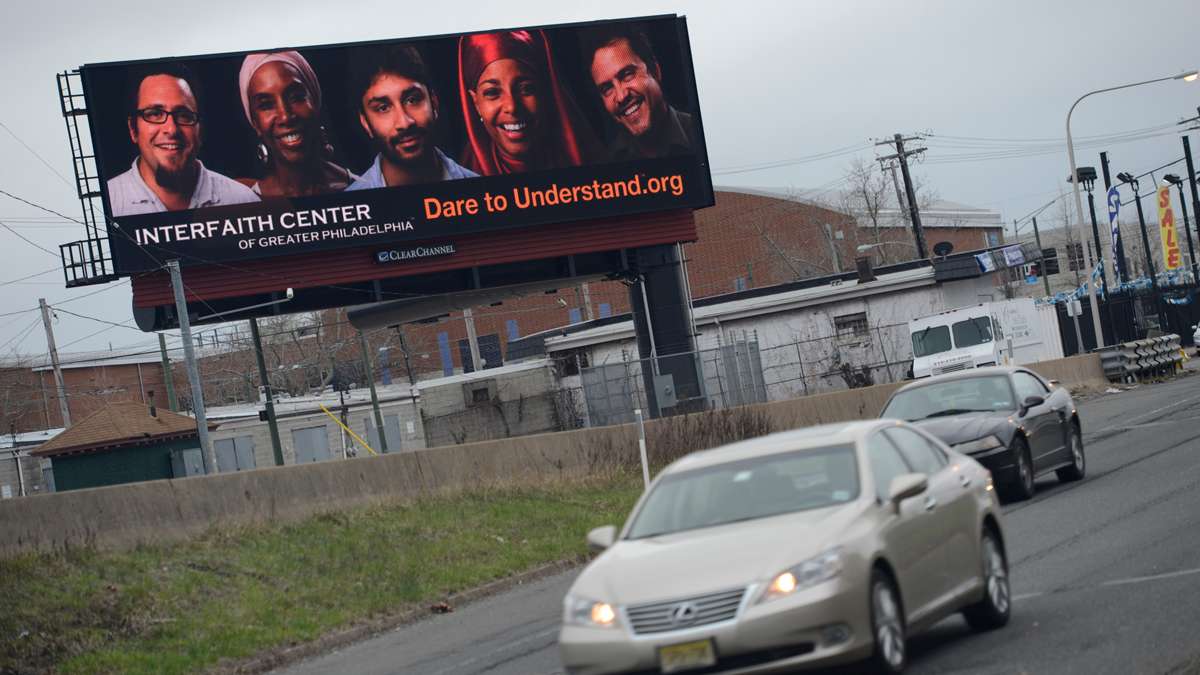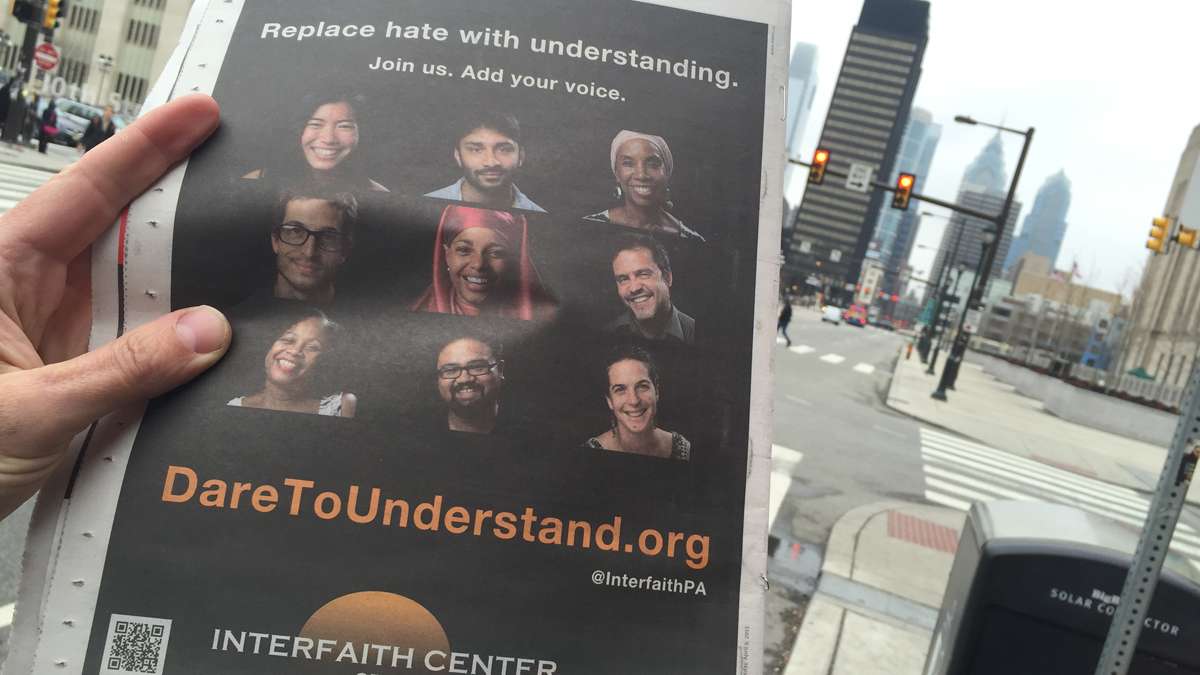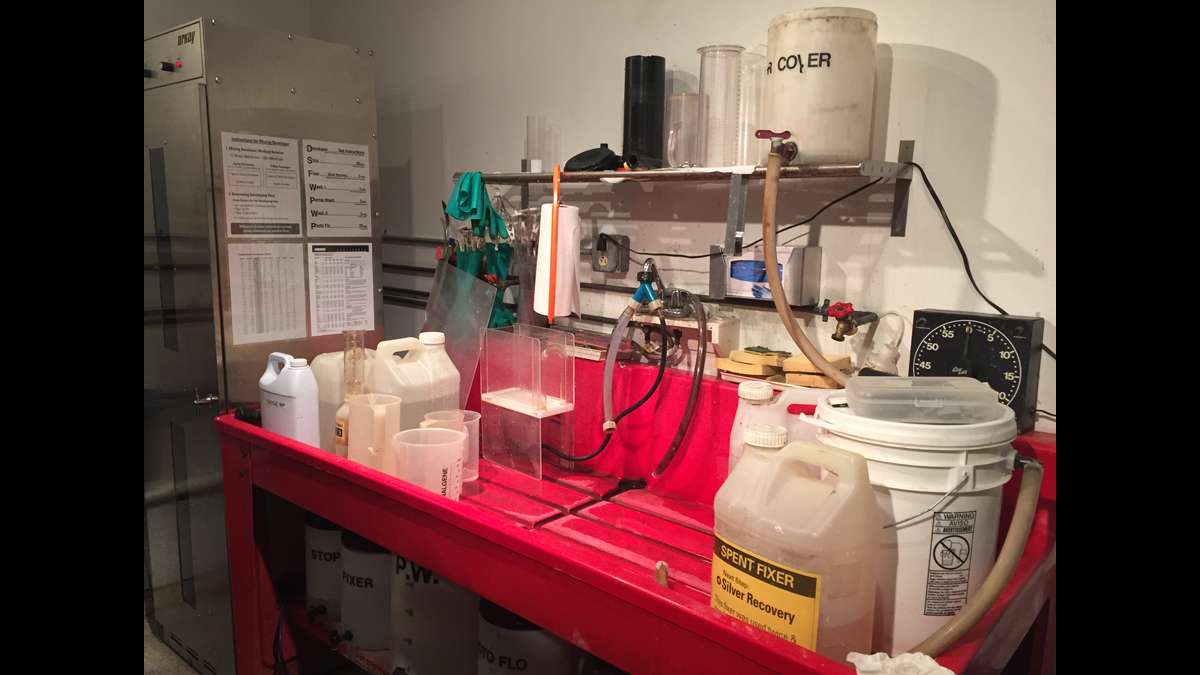Back to the darkroom to bring more light into the world
I’ve written before about how JJ Tiziou lost his solitary darkroom time when photography went digital. He’d since learned to create that inner and outer space more intentionally. So I had to follow up: Had he made it back to the chemicals and safe lights?
At the recent WHYY event “City and Self: Bringing Humanity to Work” (it was a lot of fun, btw), it was lovely to have so many of the people who’d been featured in the blog, whose journeys and reflections have helped create this space, there with us among the tables — including photographer JJ Tiziou.
The intentional darkroom
He’d been perfect for that first appearance of Human At Work — even down to the photo of him hanging upside-down off the back of a moving pickup truck shooting a protest for farm worker rights, all under a headline about work/life balance. In that posting, I’d written about how, when photography went digital and he’d lost the solitary time spent in the darkroom, Tiziou lost the inner darkroom time, as well. That was valuable time that had let him process not just photos but also feelings around the interpersonal intensity of photography. He’d since learned to create that inner and outer space more intentionally. But he was also planning to go back into the darkroom — literally.
So I had to follow up: Had he made it back into the small dark space of chemicals and safe lights? The answer is yes — for the first time in 12 years, taking a few rolls of film and his girlfriend. “She had never been in a darkroom before,” Tiziou says, “so it was a nice opportunity to introduce her to it and spend time together to re-explore that practice. We made prints of — drum roll — kittens and selfies, because that’s what people do with cameras. And it was great.”
Taking a friend into the darkroom space had been fun and also brought benefits Tiziou hadn’t expected. “Bringing her in there helped me remember that [photography] is a complicated thing, though it’s intuitive. To see someone else have an experience of the challenges of the technical side of darkroom work — ‘Wow, this is hard.’ It helps her understand how much the basic processes of my field had been radically transformed by digital technology and how that has had ripple effects through my life.”
Sounded like true integration in the work/life department to me. He went into the space, and he got into the zone. It was nostalgic to be in the physical darkroom, but it also revealed how Tiziou had come further in creating that metaphorical darkroom in his life.
“Now it can become a novelty space — a fun thing but not part of my everyday artistic practice,” he says. “But what I do need every day is the slow-down, the meditative space. The realization of the need for the darkroom space has given me permission to step back, to go to yoga more often. It’s more about the intentionality of creating that space every week.”
‘To generate light’
So what’s up in work these days? Turns out “up” is the right word. Tiziou’s art, which many people have known in a big way through the “How Philly Moves” murals at the Philadelphia airport, is now also up on billboards in support of the Dare To Understand movement being guided by the Interfaith Center of Greater Philadelphia in response to the recent ruling allowing the posting of anti-Muslim ads on SEPTA buses. The campaign made for another place where his spiritual sense of photography came into the foreground.
“My other metaphor,” he says, “is that everyone is photogenic. The word literally means ‘to generate light.’ That’s not a superficial image. It’s really a spiritual metaphor for how we see ourselves and our neighbors and how we let ourselves be illuminated by the light in others around us.
“So if we look at the word ‘photography’ — means ‘light writing.’ With light, of light. My friend Andrew Simonet says that 99 percent of the images in the world are there to sell us something or distract our attention. The remaining 1 percent is art, which serves to focus our attention, and that is a sacred duty. I’m still balancing making my life as a commercial service provider and using my work as connection-fostering and community-creating. Trying to create work that brings more light into the world.”
It’s a guiding principle for Tiziou’s response to the anti-Muslim ads. “The thing with the nasty anti-Muslim ads — from a reactive space, triggered and frustrated and you’re not well grounded — it’s easy to respond to negativity with negativity. It would have been easy to use satire or criticism. Instead I thought: ‘What’s the positive thing we want to promote instead of what we want to fight?’ So I put portraits of the beautiful photogenic […] Philadelphians together with the Interfaith Center’s #DareToUnderstand message; the result encourages us not just to see people as ‘other’ but to get to know them. And maybe we don’t agree on everything, but we start to understand each other a little better.”
One of the things Tiziou had highlighted in that initial blog posting was learning how to say no to work that took him away from the community-based art that’s his life blood and make room to say yes to the things that took him closer. “I’ve been better at saying ‘no’ to more things, keeping the headspace open to be more intentional in choosing partners who make sense and have impact. It felt good to say yes to this, and I’ll put a lot of energy into it because I want to support it. And it felt like good use of my connective abilities to help people plug into this effort in different ways.”
Having been raised Roman Catholic, spending some time as an atheist, and now considering himself a seeker who finds wisdom in many different traditions, Tiziou cites Chris Stedman’s book “Faitheist,” underlining that we all need to be part of the conversation, even if from an unlabeled spiritual space.
He may not be hanging off the back of a moving pickup right now, but it sounds like Tiziou’s journey of being human at work continues to go deeper and further.
WHYY is your source for fact-based, in-depth journalism and information. As a nonprofit organization, we rely on financial support from readers like you. Please give today.










